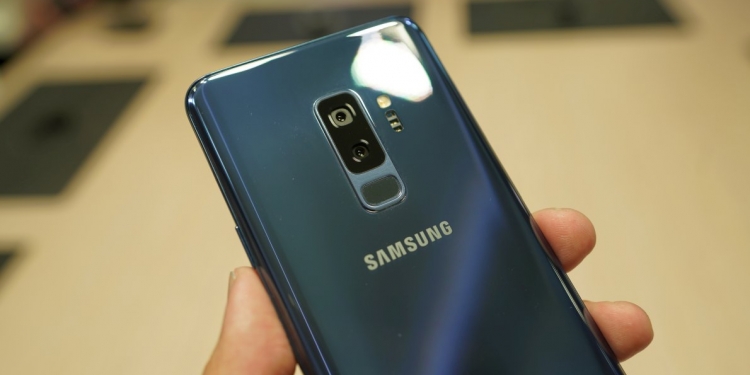Last year’s Galaxy S8 and S8+ were launched at a critical time for Samsung as they were just recovering from the Galaxy Note7 fiasco. Samsung wasn’t just trying to win back the trust of their customers, but they also aim to set a new benchmark on what a smartphone could be. The result is a stunning flagship duo with the Infinity Display taking centre stage. Arguably, Samsung was the company that made “Full View” smartphones a trend for 2017.
Fast forward a year later, we have these two, the Galaxy S9 and the Galaxy S9+. At first glance, you might think Samsung is getting complacent by recycling the same design. If improvement means to you a larger screen, more cameras and bigger battery, then you’re going to be disappointed. However, if you look deeper, you’ll find that these two smartphones are very different from its predecessors.
Similar to the previous models, the Galaxy S9 and S9+ are still having the same 5.8” and 6.2” Quad HD+ Super AMOLED displays which are still one of the best you can get on a smartphone. The forehead and chin aren’t going to change anytime soon as it has become an identity associated with Samsung’s flagship series. Both models still feel just right in the hands and like the saying goes, if it ain’t broke, don’t fix it.
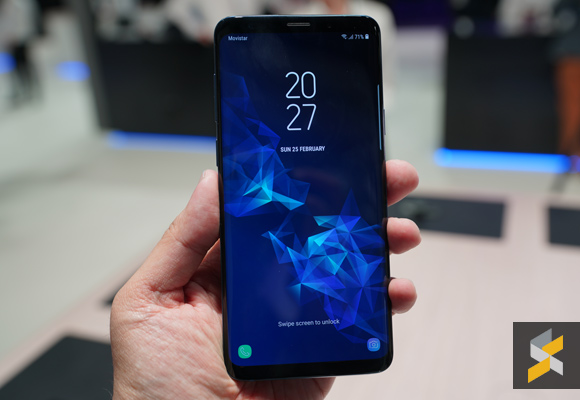
However, if you take a closer look, the bottom chin is thinner than the S8 and S8+ but only slightly. Another nice touch is that Samsung has made the front glass panel slightly darker for a cleaner look when the phone is in sleep mode. Looking at the upcoming smartphones, I’m glad that Samsung isn’t succumbing to the notch design.
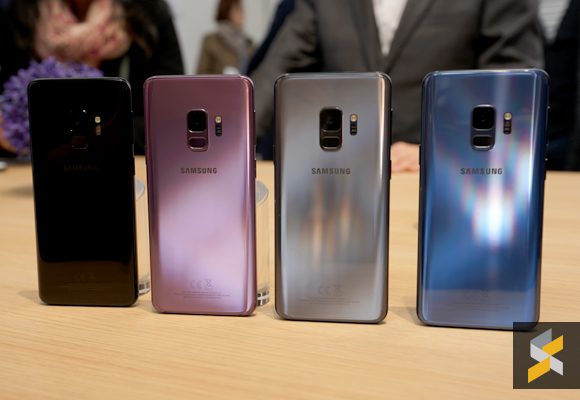
What I do like about the new Galaxy S9 and S9+ are its new colour options. The classic Midnight Black remains unchanged with a solid black exterior throughout but Coral Blue and Titanium Silver look nothing like its previous model. They are still a fingerprint magnet, but the colours look different when viewed from different angles. The prettiest of the lot is Lilac Purple which can sometimes appear to be reddish maroon when it’s held at a certain angle.
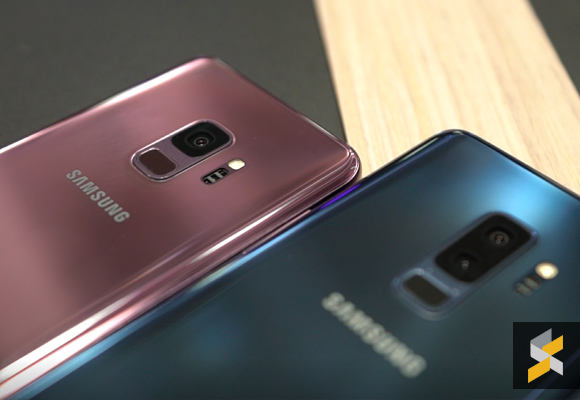
Over at the rear, the difference is more noticeable as Samsung has repositioned the fingerprint sensor which now sits below the camera module. There’s also a frame around the camera and fingerprint sensor which makes it easier to locate.
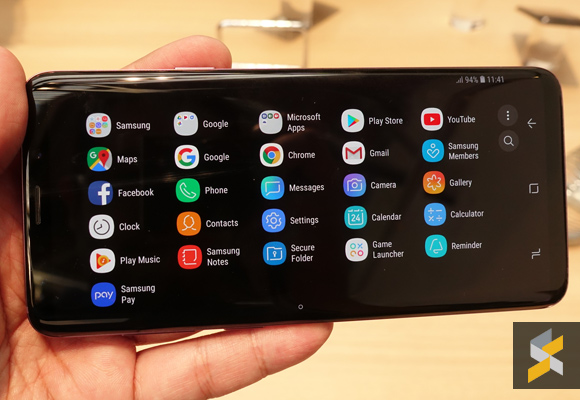
Another nice addition to the display is proper support for landscape mode like Apple’s iPhone Plus models. This is useful while watching videos or when the device is mounted on a tripod or a stabiliser gimbal. This means you can view your apps and home screen without the need of rotating the phone to portrait.
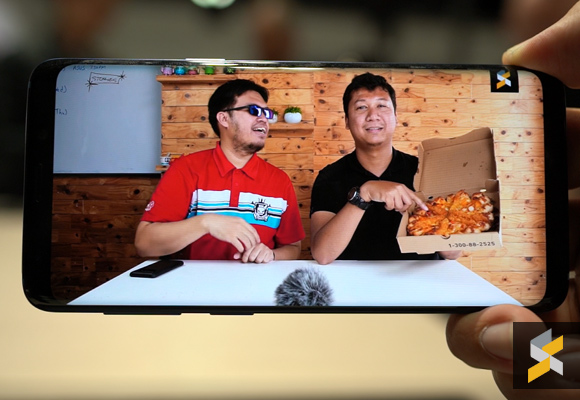
The wide 18.5:9 screen is great for watching videos and Samsung has finally included stereo speakers, which is something I believe every smartphone should have. The speakers aren’t front facing and it uses the earpiece and bottom firing loudspeaker combo that is tuned by AKG. There’s also the option to enable Dolby Atmos virtual surround sound. In my short usage, it does sound louder than a single speaker on the Galaxy S8 and Note8. We’ll definitely do a more in-depth audio comparison in our full review.
[nextpage title=”Taking smartphone photography and slow-mo to the next level”]
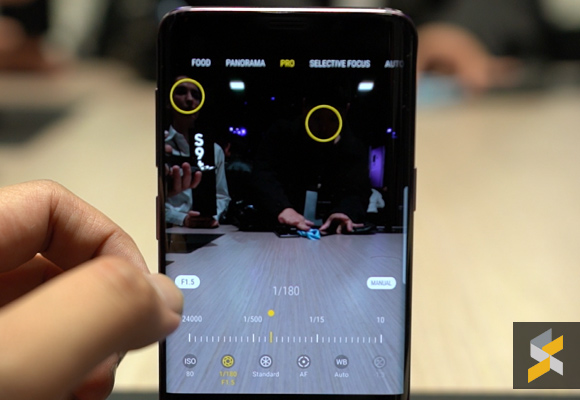
Photography is still a key focus for the Galaxy S9 and S9+ but Samsung isn’t banging hard on dual-camera technology. The main 12MP camera comes with a variable aperture tries to mimic the human eye where it can control the amount of light that hits the sensor. It switches between f/1.5 for better low light and f/2.4 for outdoor sunny situations.
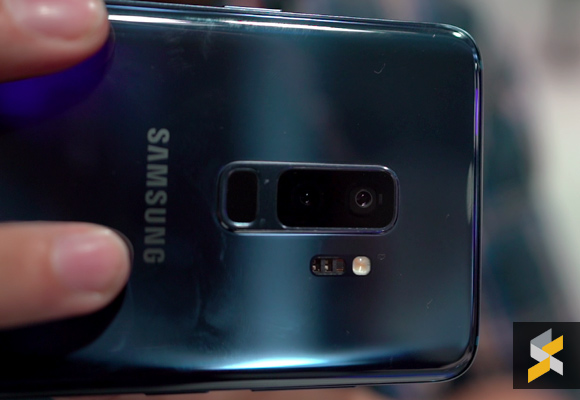
At f/1.5, this is the fastest lens on a smartphone and as a comparison, the Huawei Mate 10 and LG V30 has a f/1.6 aperture. With variable aperture, professionals will appreciate the added flexibility in complex situations. For the Galaxy S9+, it gets an additional secondary camera that’s similar to the Galaxy Note8 where it gains 2X optical zoom with Live Focus functionality.
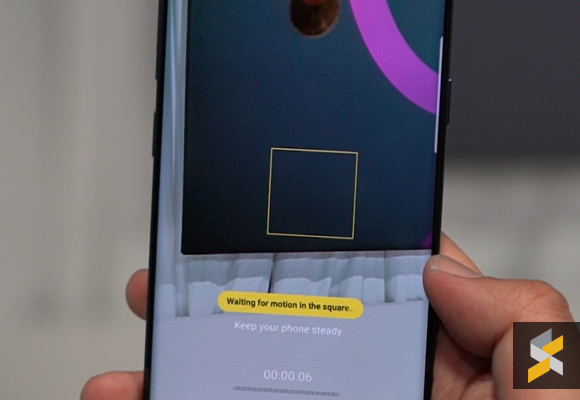
The camera is still as snappy as ever and what’s more impressive is its new 960 fps Super Slow-mo mode. No doubt Sony was the first to introduce 960fps slow-mo on a smartphone, but I think Samsung has nailed it in terms of usability.
On the Xperia XZs, it was quite challenging to record super slow-mo at the right time and I often find myself tapping too early or too slow to capture the moment. On the Galaxy S9 and S9+, all you’ll need is to draw the box around an area and it will automatically start recording in 960fps if it detects a change. On a single video recording, you can have up to 20 bursts in 960fps. To top it off, Samsung makes it easier to share your slow-mo videos by giving you the option to add dramatic music or turning it into a GIF.
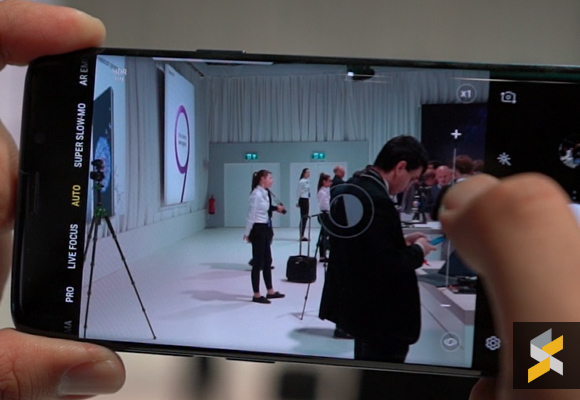
In terms of usability, the new camera UI feels a bit messy. Previously, you must swipe from left to view all camera modes but now it’s an on-screen carousel where you swipe left to right to get to the mode you want. From my short experience, it’s quite cumbersome if you want to jump quickly to a specific mode and I would prefer if Samsung sticks to the previous UI. On the plus side, Samsung has finally fixed the zoom interface on the Galaxy S9+ and now you can switch between 2X and 1X zoom without losing the exposure controls.
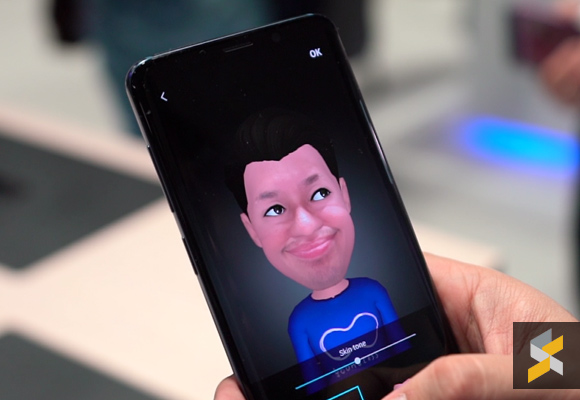
Also new is Samsung’s AR Emoji feature where you can create a 3D avatar of yourself by taking a selfie. You can customise your avatar and the best part is that it will work with third-party apps such as WhatsApp. I still think it’s a gimmick and the novelty will wear off quickly like Apple’s Animoji.
When it comes to biometrics, Samsung is still retaining its Iris scanning feature but they have made it more flexible with the intelligent scan. From my short usage, it’s basically a combination of Iris and Face Unlock for increased reliability. In theory, if it couldn’t see your iris under bright sunlight, it will turn to face unlock for authentication. It works as advertised but it still isn’t as fast as iPhone X’s face unlock.
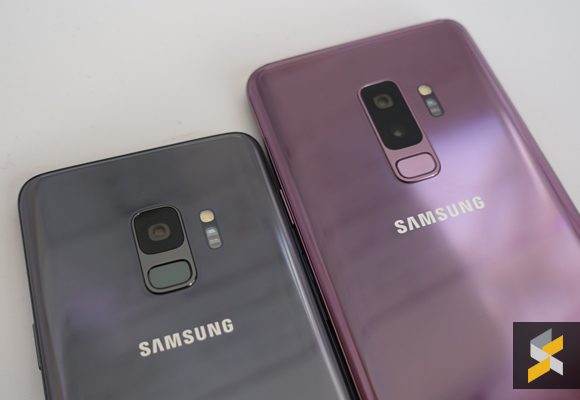
Probably my least favourite part of the Galaxy S9 and S9+ is its battery capacity. It still retains the same 3,000mAh and 3,500mAh battery capacity as its previous model which struggles to last a full day for heavy usage. Hopefully, with the newer mobile processors, we could get more battery life than the Galaxy S8 and S8+.
Even with the new improvements, Samsung has not forgotten the bare essentials. The headphone jack is still there, and it still accepts microSD expansion up to 400GB. You still get IP68 dust and water resistance on both models and it supports Samsung Pay, Gear VR and fast wireless charging.
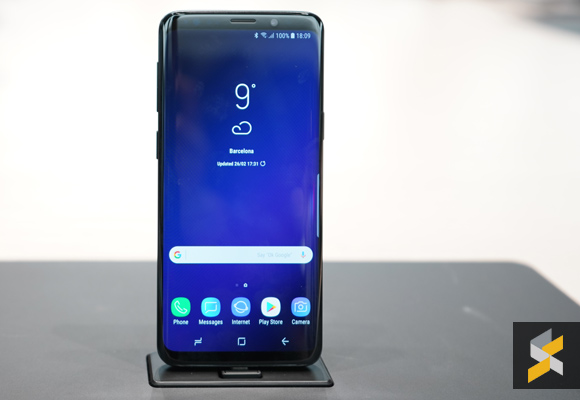
The Galaxy S9 still retains the same Galaxy S8 price tag of RM3,299 and it comes with 64GB of onboard storage. On the bigger Galaxy S9+, you’ll be happy to know that Samsung Malaysia is finally offering multiple storage options of 64GB, 128GB and 256GB. The 64GB version is priced at RM3,799 while the 128GB unit is going for RM3,999.
I think the RM200 price difference between the S9+’s 64GB and 128GB model is quite justified considering a high-performance 64GB microSD card is currently going for around RM130. If you ask me, having internal storage is always better as it is faster and more reliable than having to rely on an additional microSD card. If that’s not enough, the 256GB model is going for RM4,399.
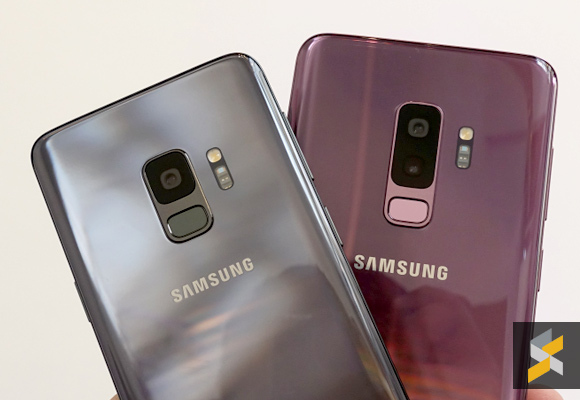
To sum it up, Samsung has taken many of the great features of the Galaxy S8 and S8+ and have added significant upgrades in audio and camera with the Galaxy S9 and S9+. But is it enough? Give us some time to really test out the phone and we’ll get back to you with a full review.
Photos shot on Sony A7R III and Sony RX100 M5

